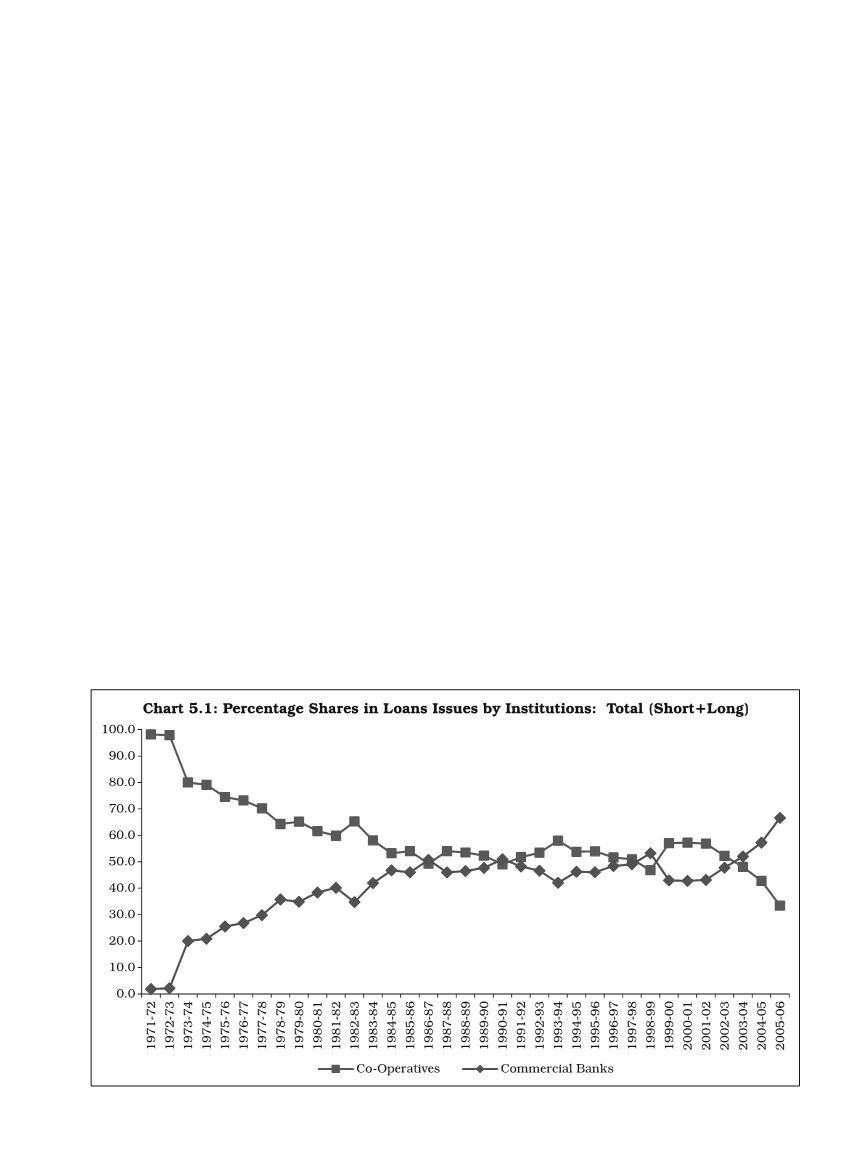
137
in agricultural lendings after bank nationalisation. Correspondingly, the share
of cooperatives in crop loans as well as term loans began to recede. But, it
must be said to the credit of the cooperative institutions that the decline in
their share had been rather slow and gradual until the 1990s. Also, based on
their vast institutional reach, cooperatives have retained their specialisation
in crop loans, while commercial banks, based on their vast resources and
expertise, have expanded their base in investment credit. In terms of absolute
amounts of total disbursements, cooperatives have had higher amounts than
commercial banks and RRBs put together until 1997-98. It was only thereafter
that a push to agricultural lendings by commercial banks was provided, based
on the R.V. Gupta Committee report (1997) which introduced a number of
procedural simplifications for such bank lending. This was particularly true in
crop loans. In term credit, commercial banks and RRBs together had overtaken
the cooperatives in the early 1980s; in essence that was how the commercial
banks’ involvement in agricultural lendings began. Overall, as said earlier, the
cooperatives have retained their specialisation in crop loans and commercial
banks in term loans.
To dilate a little more on the trends during the four decades after bank
nationalisation, the following key results are discernible.
First, overall growth:
After a sharp increase in total agriculture credit disbursements (i.e.
loans issued) at an annual rate of about 17% in nominal terms during the


